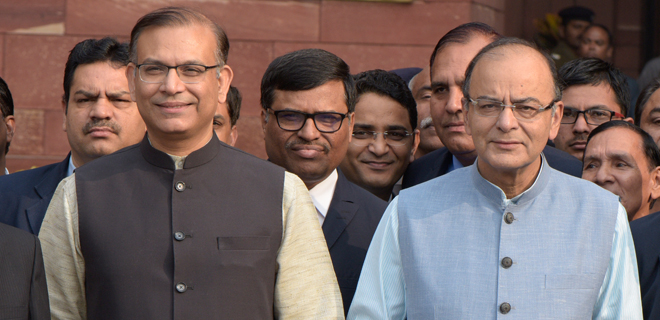Figuring the Budget for the small tax payer
For the taxpayer, the biggest relief has been by way of leaving the tax slabs unchanged

A lesson from Budget 2016 is that it could have done more harm than it has done. For the taxpayer, the biggest relief has been by way of leaving the tax slabs unchanged. There has also been no additional cess, at least not for most people.
Here are 7 points which you need to ponder about:
Tax concessions
The tax rebate for resident individuals with income up to Rs 5 lakh has been proposed to be increased from Rs 2,000 to Rs 5,000 under section 87A. Also, the limit of deduction of rent paid under section 80GG has been increased from Rs 24,000 per annum to Rs 60,000 to provide relief to those who live in rented houses.
Housing thrust
There is deduction for additional interest of Rs 50,000 per annum for loans up to Rs 35 lakh sanctioned in 2016-17 for first-time home buyers, where house cost does not exceed Rs 50 lakh. This will benefit a large section of the population, which is looking for affordable housing under the ‘housing for all’ initiative of the government.
Social Security
Employer’s contribution to recognised provident fund and approved superannuation fund in excess of Rs 1.5 lakh per annum each is proposed to be taxed in the hands of employee in the year of contribution. Further, withdrawal from NPS or recognised provident fund or approved superannuation fund up to 40 per cent of corpus is proposed to be exempt in the hands of an employee.
Health insurance
The existing RSBY scheme, which has a limit of Rs 30,000, would be replaced by a new health scheme announced by the government where the hospitalisation sum insured is increased to Rs 1 lakh with an additional top up package of Rs 30,000 for seniorcitizens. With this, the number of ailments or procedures where complete cost of treatments can be covered would increase than in the existing scheme.
Aadhar to the rescue
The move to introduce a law to bring statutory backing for Aadhaar will clear decks for Jan Dhan Yojana, Aadhaar and Mobile number aimed at expanding access to financial services. By basing direct benefit transfer on Aadhar, administration issues regarding savings and investments will ease and make it comfortable to access government benefits and monitor them as well.
Digital power
Setting up of higher education financing agency with initial capital base of Rs 1,000 crore will work in favour of students looking for funding. Along with this, by creating a digital depository for school leaving certificates, college degrees, academic awards and mark sheets, the fraud in education sector will go down. This will help deserving students get their right.
Impact on the super rich
For those who are very rich, there will be an additional tax at the rate of 10 per cent of gross amount of dividend payable by them on recipient of dividend in excess of Rs 10 lakh per annum. The surcharge on people earning more than Rs 1 crore income will be raised from 12 per cent to 15 per cent.









